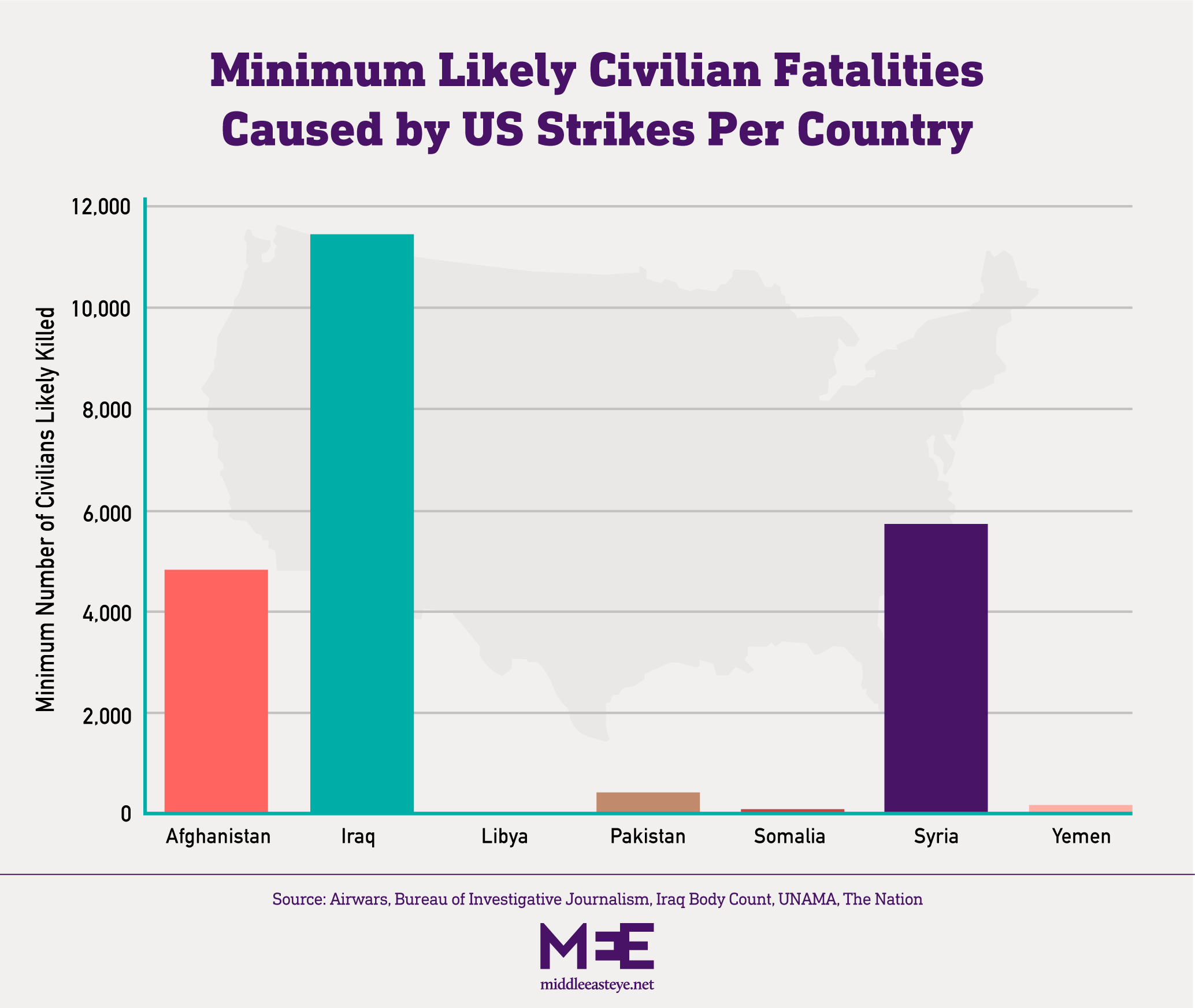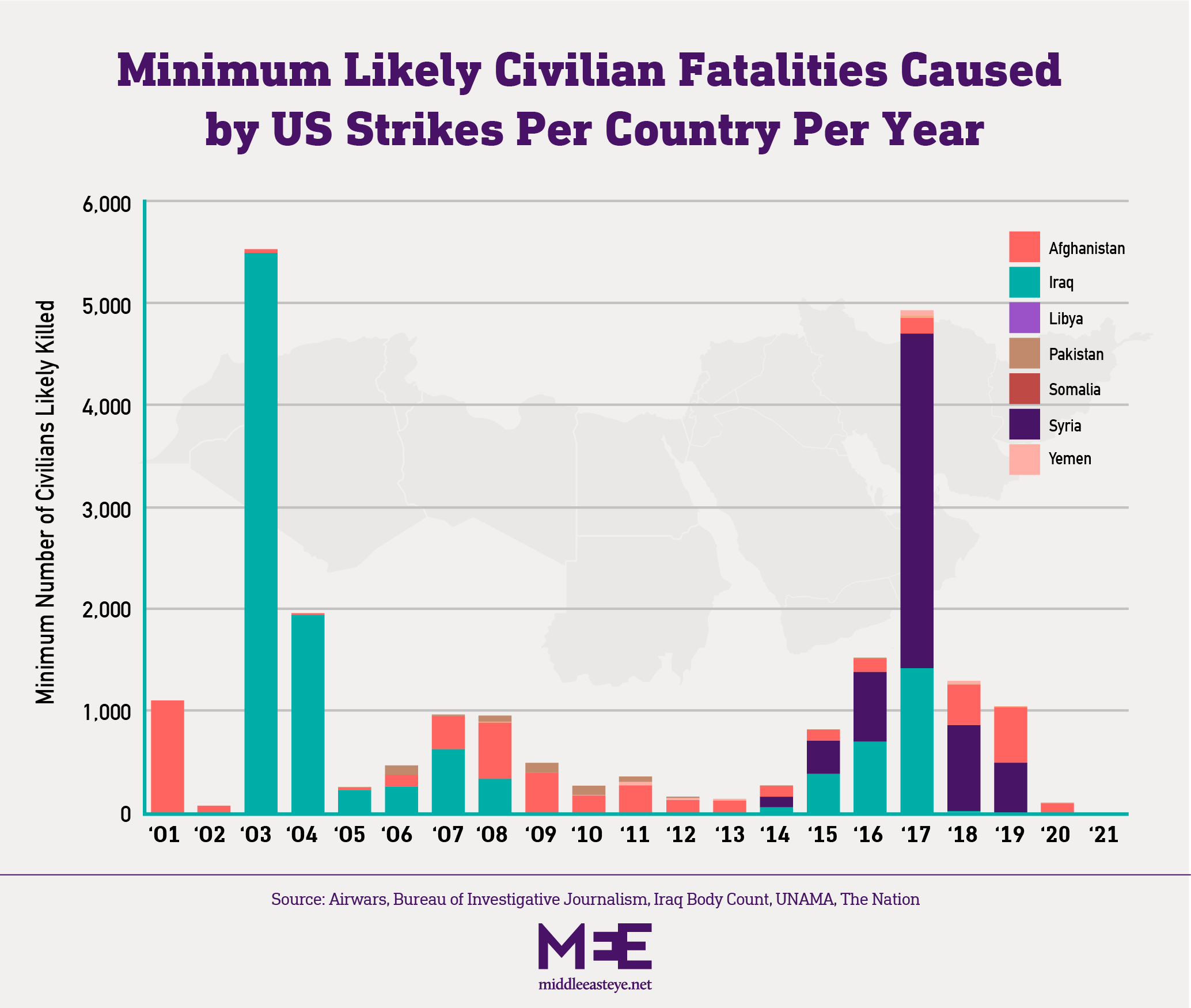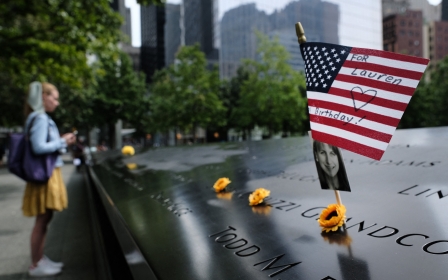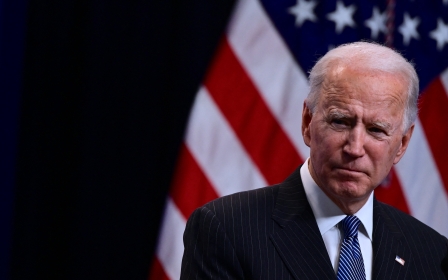US air strikes after 9/11 attacks directly killed up to 48,000 civilians

As many as 48,000 civilians have been killed in the last 20 years as a direct result of US air strikes, according to an Airwars investigation that sheds new light on the human cost of Washington’s so-called “war on terror”.
Publishing its findings ahead of the 20th anniversary of the 9/11 attacks, the UK-based monitoring group concluded that at least 22,679, and potentially as many as 48,308 civilians, were killed by US aerial strikes between 2001 and 2020.
Using local sources and official US military data, Airwars concluded that, in the years following the 9/11 attacks, the US has carried out a minimum of 91,340 air strikes across seven major conflict zones.
Air strikes were carried out by the US military in Iraq, Syria, Afghanistan, Somalia, Yemen, Pakistan and Libya. The heaviest casualties were in Iraq and Syria. Between 11,474 and 24,136 civilians were killed in Iraq from 2001 to 2020, while in Syria as many as 15,573 were killed in US air strikes.
In Afghanistan, Airwars found that as many as 6,799 civilians were killed, while in Yemen that figure is 412, in Somalia 333, in Pakistan 969 and in Libya 86.
"For much of the last 20 years people living in Washington or New York could have been forgiven for forgetting their country was at war. Whether a drone strike in a Yemeni village or a military base in rural Afghanistan, it often felt far removed - almost another world - but that isn't how it felt for those millions of people living in those conflicts," Joe Dyke, senior investigator at Airwars, told Middle East Eye.
"This isn't all Airwars data - in fact, we relied upon the work of many other conflict monitoring organisations - but by bringing it together we hoped to lay out the real human toll of 20 years of the 'forever wars.'"
In addition to US military and other internationally produced data, a range of local sources were used to determine the number of civilian casualties, which explains the disparity in figures - when sources suggest different numbers of fatalities, monitoring organisations record both the minimum and maximum estimates.
The figures include only civilians killed as a direct result of US air strikes, not those killed by other forms of fighting or by air strikes carried out by US allies.
US air strikes were at their heaviest during the invasion of Iraq in 2003, when the military declared 18,695 strike sorties, and in the campaign against the Islamic State (IS) group, which saw more than 9,000 strikes a year from 2015-2017. Before the invasion of Afghanistan, the US air force did not have a single armed drone.
No fewer than 5,529 civilians were killed by alleged US strikes in 2003, making it probably the worst year in terms of fatalities. These strikes were almost all part of the invasion of Iraq.
In 2014, the US began its campaign against IS, leading to the intense bombardment of the Iraqi city of Mosul and the Syrian city of Raqqa in 2016 and 2017. Airwars found that at least 4,931 civilians – and as many as 19,623 – were killed by strikes in 2017.
Neither Centcom, the part of the US military responsible for most of these conflicts, nor the US Department of Defense, have ever published estimates for the number of civilians killed by US military action since 9/11. Centcom told Airwars that data on officially recognised civilian harm was not readily available.
In the campaigns against IS in Iraq and Syria, the US-led coalition has accepted killing 1,417 civilians, which is far lower than Airwars’ own estimate of at least 8,300. In 2016, the US admitted killing between 64 and 116 civilians in Libya, Pakistan, Somalia, and Yemen in counter-terrorism operations between 2009 and 2015.
Assessing the 'war on terror'
The new findings come as the world evaluates the impact of the US “war on terror”, launched in the aftermath of the 9/11 attacks, in which 2,977 people were killed by al-Qaeda in New York, Pennsylvania and Virginia. The 20th anniversary of the attacks is this week.
In response to the atrocities of 9/11, US President George W Bush launched a war he said would “not end until every terrorist group of global reach has been found, stopped and defeated”. This campaign has come to be known as the “war on terror”, or America’s “forever wars”. Bush said at the time, “Americans should not expect one battle, but a lengthy campaign unlike any we have ever seen.”
This war has spanned the globe and changed the face of the Middle East. As well as the full-scale invasions of Iraq and Afghanistan, the US has initiated targeted drone and air strike campaigns against militant groups in Somalia, Yemen, Pakistan, and Libya.
Brown University’s Cost of War programme found that over 387,000 civilians have been killed as a result of fighting in post-9/11 wars. The number of war refugees and displaced persons stands at 38 million. The US is conducting counter-terror activities in 85 countries.
Middle East Eye propose une couverture et une analyse indépendantes et incomparables du Moyen-Orient, de l’Afrique du Nord et d’autres régions du monde. Pour en savoir plus sur la reprise de ce contenu et les frais qui s’appliquent, veuillez remplir ce formulaire [en anglais]. Pour en savoir plus sur MEE, cliquez ici [en anglais].







